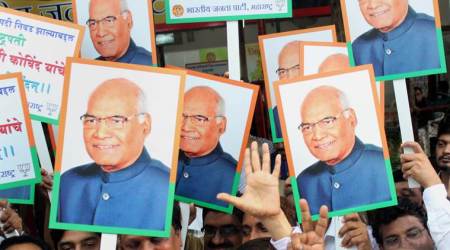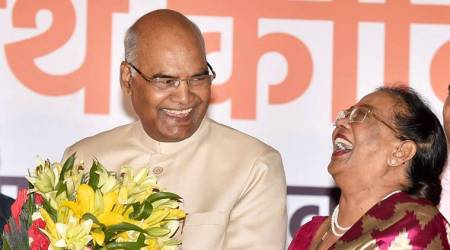 President-elect Kovind’s real challenge starts where those statements end
President-elect Kovind’s real challenge starts where those statements end
That Ram Nath Kovind would be elected the next President of India was foretold, given the NDA’s numerical strength in the electoral college. That his election will be seen as the BJP sending out a message of Dalit empowerment and as the assertion of Sangh Parivar dominance of the country’s power structure — it is for the first time that the country’s president, vice president and prime minister are individuals politically groomed in the Parivar — is also no secret.
But President-elect Kovind’s real challenge starts where those statements end. It will be on him now, after winning an intensely political election, to seize the high ground above the fray. It will be his task and duty to ensure that his presidential tenure transcends the tokenism, or even the very powerful symbolism of being a Dalit president, that paved his way to Rashtrapati Bhavan.
This is a difficult — and interesting — time to be India’s President. According to the Constitution, the president employs his discretionary powers in government formation in the aftermath of an uncertain electoral verdict. But it would be a miserly and narrow reading of the Constitution, indeed, that would disallow him an important place and role in between elections. Today, many of the established equations and certainties of India’s polity are being unsettled and the balance between crucial institutions is being reset.
There are concerns that the first single-party majority government in three decades could make the political executive much too dominant — vis a vis the judiciary, for instance. A battle of attrition may already be said to be underway, in fact, between the two institutions on the matter of their respective roles in judicial appointments.
Then, there are apprehensions that a majoritarian triumphalism may be continuing unabated and unchecked on the ground ever since the 2014 verdict, setting the country’s minorities, especially Muslims, on edge — on the day the result of the presidential contest was announced, Parliament was discussing the recurring episodes, across states, of mob violence and lynching in the name of the cow. A new balance, a new poise, may well be in the process of being struck in the polity and the economy, between institutions, between communities, between a nation’s future and its real and imagined past. At a time of change and churn, it is especially important that the Indian Constitution, with its openness and flexibility — but also its basic structure — is in safe hands.
It will be President Kovind’s responsibility to be the vigilant guardian of the Constitution and its values. He must know that a nation will look to him as an embodiment of stability and continuity — and, above all, as a moral presence. Even as he acknowledges the limits and constraints of his office, he will have many tools of intervention at his disposal — a signal, a nudge, a cautionary note. He must use them well. Congratulations, Mr President, and all the best.

